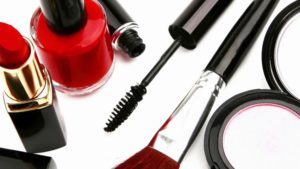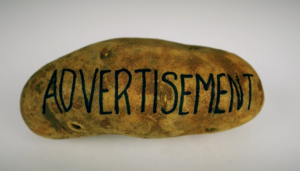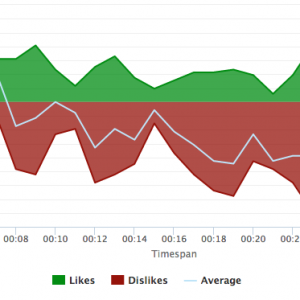Best Practices for a Successful Facebook A/B Test
You are squandering your money if you are not A/B testing your Facebook ads. Advertising on Facebook is not a one-size-fits-all approach. Crafting Facebook Ads that provide results takes effort and study. Split testing Facebook Ads is one approach to get your marketing team on the right track.
But what happens when you have finished setting up your A/B test in Facebook Ads? You should not be concerned if you are unclear where to begin because you are not alone. Take advantage of the best practices that we have compiled for you.
Facebook A/B Test Best Practices
- Stay organized with tracking spreadsheets.
Because A/B tests have the potential to influence your Facebook advertising strategy in the future, it is critical to approach the process systematically and with defined goals and tracking in place. Using an A/B test tracking spreadsheet guarantees that you can collect and evaluate data to make the most informed, data-driven decisions possible.
- Choose one variable that will help you reach your goals.
When doing an A/B test on Facebook, make sure you only test one variable. You can conduct a separate multivariate test, but for A/B testing, just one variable is essential. With only one variable, your test results will be more conclusive.
- Pick audiences that you want to reach with ads.
For your test, select a new audience. They should be large enough to deliver demonstrable results but not the same audience as another campaign you are conducting. It is fine if they are the same as a draft campaign because they will not be published.
If you choose the same target as an existing campaign, Facebook’s technology may mix up your advertising and produce polluted results.
- Use hypotheses that are measurable and valuable.
Make sure your hypothesis is measurable so you can examine your test results to get the most out of them. To put it another way, make sure your hypothesis is clear, understandable, and testable via an A/B test.
“Which manner of delivery does my audience respond best to?” is a straightforward hypothesis to make. The Delivery Optimization A/B test on Facebook might provide an answer to this query.
- Make ideal time frames.
Using an optimum time frame is one of the most efficient A/B testing recommendations for Facebook ad campaigns. If you’re not sure what time range to use, three or four days is an excellent place to start. Tests conducted in less than this time range may yield inconclusive findings.
Time is required for your split test to decide a winner statistically. Depending on the size of your audience, this can take anything from a few days to a few weeks. Keep in mind that any changes made during the ‘learning period’ will reset the process initially, so resist the urge to make changes.
- Choose a budget that works for your business.
Facebook can generate an ideal budget for you based on your test information, or you can create your own desired budget while filling out test details. Setting an optimum budget can assist you in determining a winning approach because it takes Ad Spend into account when determining the effectiveness of your test.
Split testing has many advantages, one of which is the ability to prevent audience overlap, which ensures that the same audience does not see numerous versions, which could alter the findings. You will be able to declare which one is the clear winner.
A/B testing allows you to have a better knowledge of how your audience behaves. Performing them on Facebook simplifies the process and increases your familiarity with the platform’s ad system.
- Take advantage of the Facebook algorithm.
Whether you like it or not, taking advantage of the Facebook algorithm when running an A/B test may be in your best interests. Facebook’s algorithm is aware of who your customers are. We do not use the A/B test feature, but we do the same with Facebook’s campaign budget optimization (CBO).
We are putting our faith in the algorithm to figure out the best way to spend our money across various ad sets and creative approaches.
- Test out your call to action
If you want to see results from A/B tests on Facebook, you need to change up and test your call to action. If you want to see results from A/B tests on Facebook, you need to change up and test your call to action. Your call to action (CTA) is the most critical aspect of your ad campaign, and minor tweaks can have a significant impact.
When A/B testing CTAs, ensure there is only one difference between the two. That way, you will be able to pinpoint the information that’s helping or hurting your ad.
- Consider human psychology
Taking a deep dive into how your audience thinks to catch their attention in the most effective way possible is a more compelling method to consider. We process information in three different ways as humans: think, feel, and know. To attract and hold the visitor’s interest, you should combine these three components in your advertisements.
Begin by putting the image to the test to see if it attracts attention (mixture of “feel” and “know”). Focus on the copy after you have determined which image works (“think”). Then you develop various variations – Know, Feel, Think, or Feel, Know, Think – until you find a winning combination.
Remarket to non-converting audiences using the opposite strategy, as they may absorb information differently, and you may not appeal to them correctly.
Final Thoughts
If marketers are unsure about specific variables, A/B testing might help. Indeed, split testing Facebook Ads protects you from having to rewrite ad designs, CTAs, messaging, colors, or design concepts after determining which one works better. You acquire a clearer perspective on appealing to your audience once you know which creatives, locations, or delivery engage with them.
Whatever goal you set out to achieve with your Facebook A/B test, you could be shocked by the results. Remember that no two A/Bs have to be identical, and it might be fun to experiment with different elements. You never know what you’re going to find.








